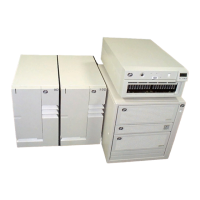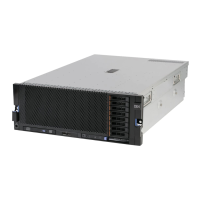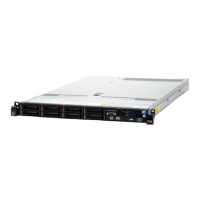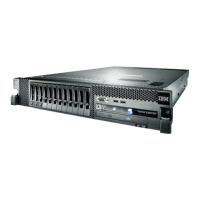
Do you have a question about the IBM RS/6000 H50 and is the answer not in the manual?
| Storage | SCSI |
|---|---|
| Operating System | AIX |
| Form Factor | Tower |
| Number of Processors | 1 |
| RAM | Up to 4 GB |
| Memory | Up to 4 GB |
| Hard Drive | SCSI |
| Network Interface | 10/100 Ethernet |
| Expansion Slots | PCI |
Outlines FCC compliance for Class A digital devices.
Details conformity with EU directives on electromagnetic compatibility.
States compliance with IEC Standard 950 for product safety.
Covers safety standards for telecommunication network connections in the UK.
French conformity statement for Canadian radio communications.
Compliance statement for Canadian Interference-Causing Equipment Regulations.
Japanese Voluntary Control Council for Interference statement.
Taiwan EMI statement for Class A products.
German compliance statement regarding electromagnetic compatibility.
Essential safety instructions for connecting/disconnecting devices and handling electrical hazards.
Important safety information regarding the system's optical drive and laser classification.
Lists other IBM publications available for related system information.
Lists registered trademarks and service marks used in the document.
Provides diagrams and descriptions of component locations within the system unit.
Details the rear panel connectors and components of the system.
Shows the physical locations and numbering of drive bays.
Illustrates the placement of connectors and components on the I/O board.
Diagrams the locations of connectors and components on the system board.
Shows the slots for memory card installation on the system board.
Details the FMC card's connectors and LED indicators.
Describes the components and indicators on the system's operator panel.
Explains the meaning of different LED states on the operator panel and power supplies.
Illustrates the flow of data between major system components.
Provides detailed technical specifications for the server's mechanical, electrical, and environmental requirements.
Describes approved power cable types and specifications for various regions.
Outlines procedures for performing a system service inspection for safety and maintenance.
Provides starting points for troubleshooting based on symptoms.
Guides users through diagnosing problems using error codes and symptoms.
Outlines procedures for locating and isolating power-related problems in system units.
Details a procedure to locate defective FRUs by running diagnostics on a minimally configured system.
Describes how to analyze failures in systems with multiple disk drive modules.
Explains the general methodology and precautions for using MAPs.
Entry point for troubleshooting SSA hot-swap disk drive issues.
Lists firmware and power-on self-test error codes and their corresponding FRU actions.
Expands on firmware error codes related to memory module PD values.
Maps bus SRNs to potential failing devices and associated FRUs.
Provides information on server initialization checkpoints and actions for hang conditions.
Lists Service Processor checkpoints and their corresponding actions or failing FRUs.
Lists firmware progress codes and their associated FRU actions.
Provides resolution steps for system hangs during memory testing.
Guides troubleshooting for boot image loading issues based on specific checkpoint codes.
Explains the system's physical and AIX location code formats for identifying FRUs.
Provides a visual and textual reference for AIX and physical location codes.
Details the format and possible values for AIX location codes.
Step-by-step procedure for loading diagnostics from the default boot list.
Explains the default boot sequence and how the service mode boot list functions.
Explains SRNs and how they help identify problems and FRUs.
Describes actions to take when SRNs indicate software or microcode issues.
Provides a glossary of FRU names found in the SRN table.
Details conditions that lead to invalid SSA loop configurations and how to correct them.
Explains the format of SSA location codes used to identify adapters and devices.
Describes how disk drive modules are connected via SSA links and adapters in loops.
Illustrates the relationships between SSA connectors and disk drive module strings.
Explains how physical disk drives (pdisks) are identified and configured.
Lists the rules governing the proper configuration of SSA loops.
Describes how data travels through SSA loops and the impact of module failures.
Introduces the graphical interface for managing system configuration and information.
Allows viewing system setup information, including hardware and firmware details.
Provides options for selecting operating systems, boot devices, and startup sequences.
Offers access to various system management tools like password, memory test, and error log.
Enables setting and managing power-on and privileged-access passwords for system security.
Allows running a pass/fail test on the system's memory.
Provides functionality to view and clear the system's error log.
Allows selection of remote systems for loading programs via network adapters.
Enables updating system firmware and service processor firmware from a diskette.
Allows defining the active display for system management interactions.
Enables starting the system from a defined boot device, useful for unattended operation.
Protects against unauthorized starting of system programs.
Describes the text-based interface for system configuration and management.
Provides information about the computer's hardware setup.
Presents options for software selection, default OS, installation, and boot device sequence.
Allows viewing and changing the custom boot list for startup device sequence.
Provides options to set/remove passwords and configure unattended startup.
Enables setting up remote startup capability by configuring network parameters.
Allows configuring client, server, gateway IP addresses, and subnet mask.
Allows viewing adapter hardware addresses and configuring network adapters.
Displays and allows clearing of the computer's error log.
Allows viewing and changing SCSI controller addresses (IDs).
Process for updating system firmware from a diskette.
Procedure to perform firmware recovery if information is corrupted.
Defines which display is used for system management.
Provides access to the Open Firmware command line for advanced configuration and debugging.
Precautions for handling components sensitive to electrostatic discharge.
Procedures for installing the CPU drawer into a rack unit.
Steps for installing rack mounting rails and hardware for the CPU drawer.
Instructions for installing a rear stabilizer assembly for rack-mounted units.
Illustrates the typical installation of rails for the CPU drawer.
Detailed steps for physically installing the CPU drawer into the rack.
Describes the removal and replacement of the blower assembly.
Procedures for removing and installing hot-swap disk drives while the system is powered on.
Details how to use the test switch on power supplies to determine if they need replacement.
Describes the removal and replacement of power supplies and their associated fans.
Instructions for removing and replacing the rear fan.
Explains how to move the drawer to the rear service position for access.
Describes how to move the drawer from the service position back to the operating position.
Details the removal and replacement of the FMC card.
Instructions for removing and installing memory cards.
Describes the removal and replacement of the air flow duct for the second CPU.
Instructions for removing and installing CPU cards.
Details the removal and replacement of the service processor card.
Describes the process of removing and replacing expansion adapters.
Step-by-step instructions for removing and replacing the system board and I/O board.
Provides safety precautions and procedures for removing and replacing the system battery.
Instructions for removing and replacing the power distribution assembly.
Explains how to move the drawer to the front service position for access.
Describes how to move the drawer from the service position back to the operating position.
Procedures for removing and installing various media devices.
Details the removal and replacement of the operator panel control assembly.
Instructions for removing and replacing the SCSI or SSA backplane.
Lists part numbers and descriptions for various system cables.
Discusses the functions and features supported by the Service Processor.
Describes the structure and access methods for Service Processor menus.
Outlines the options available to general users via Service Processor menus.
Details the options available to privileged users via Service Processor menus.
Displays the main menu structure for Service Processor configuration.
Provides access to various setup options for the Service Processor.
Covers setting and managing access passwords for the Service Processor.
Procedure for changing the privileged access password.
Procedure for changing the general access password.
Allows enabling or disabling console mirroring for monitoring sessions.
Activates keyboards and displays for communication during console mirroring.
Options for setting up operating system surveillance parameters.
Allows reinitializing the Service Processor.
Process for updating the Service Processor's flash EPROM.
Menu for controlling system power states and unattended start modes.
Configures policies for system reboots and restarts after failures.
Explains different methods for powering on the system, including timed and unattended options.
Details recovery procedures for system failures during boot or operation.
Describes how the Service Processor monitors system health and detects failures.
Enables the Service Processor to report detected conditions via modem.
Allows local ASCII terminals to monitor remote Service Processor activities.
Procedures for updating Service Processor firmware using various initiation methods.
Provides access to view and manage Service Processor error logs.
Allows reviewing Power-On Self Test errors to help isolate faults.
Option to select the display language for Service Processor and firmware messages.
A basic checklist for setting up and testing the Service Processor.
Procedures for testing Call-In and Call-Out functionality.
Guides on configuring serial ports on an AIX system for modem communication.
Provides sample modem configuration files for setting up modems with the Service Processor.
Guides on selecting appropriate modem configuration files based on modem response.
Presents examples of modem settings for various modem types.
Instructions on creating or modifying custom modem configuration files.
Discusses issues with modems using Xon/Xoff flow control and recommendations.
Explains how the Service Processor uses ring interrupts for power-on events.
Discusses compatibility and setup for terminal emulators in remote sessions.
Outlines steps to recover the modem to a known state after environmental issues.
Describes methods for transferring modem sessions between local and remote consoles.
Strategies for maintaining seamless connections by assigning a primary console.
Describes the initial phase after power is applied, including SP initialization and POST.
Covers the phase where the SP handles automatic duties and is available for menus.
Details the phase from power-on to operating system loading, including retry checks.
Describes tasks performed by the SP during steady-state operating system execution.











